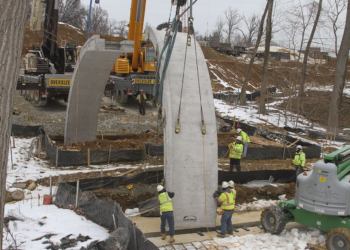The treatment of the legacy of the Troubles in Northern Ireland since the Belfast (Good Friday) Agreement of 1998 should by rights be a national scandal. Unfortunately, this process of self-flagellation only occasionally becomes so absurd that the media outside Ulster pays attention.
There was one such example last year, when Labour announced that it would repeal legislation intended to stop terrorists, including Gerry Adams, from claiming compensation for their internment without trial. Similarly, in February of this year, a Coroner’s Court inquest ruled that SAS soldiers were wrong to kill four members of a heavily armed IRA gang, at Clonoe in County Tyrone in 1992. This case was passed to the public prosecution service, raising the possibility that the servicemen would stand trial for keeping the public safe from paramilitaries.
The decision understandably caused an angry reaction in the House of Commons. The shadow secretary of state for Northern Ireland, Alex Burghart, said that if the finding reflected “the state of the law, then the law is an ass and it is up to Parliament to change it”. The Conservative MP, John Cooper, accused the coroner, Mr Justice Humphreys, of encouraging the idea “that there is an equivalence between the IRA and the brave soldiers of the SAS”.
For its part, the government seemed only to be on the defensive. Ministers had already announced that they planned to repeal parts of the Legacy Act that would have prevented further inquests. The coroners’ court is working its way through 92 killings attributed to the police and army — forty of which involve the deaths of terrorists. It is an expensive, one-sided process that has fuelled the republicans’ campaign to demonise the police and army.
To Labour’s credit, it eventually confounded expectations and announced that it would challenge the Clonoe judgement, albeit after a lengthy delay. At the weekend, the veterans minister, Al Carns, wrote to the Tory defence spokesman, James Cartlidge, revealing that the ministry of defence would launch two judicial reviews of the decision. In effect, the coroner’s verdict on the events in County Tyrone was so astounding that the MOD could not allow it to stand.
That night in 1992, a gang of at least ten IRA terrorists attacked Coalisland police station with a heavy, Soviet-issue “Dushka” machine gun mounted to a lorry. This weapon was known for its ability to penetrate armour and concrete at a range of over half a kilometre. The murder gang, pumped up after their attempt to kill police officers, then unleashed more rounds outside the home of a fellow IRA man who had been killed by an SAS operation the year before.
More Irish nationalists accept that terrorist violence was necessary
This time, a unit of ten soldiers waited for the terrorists at Clonoe chapel car park and eventually opened fire. The coroner decided that this use of force was unnecessary, because the IRA men intended to disassemble their machine gun in the car-park and disperse for the night. He discounted the defence’s claim that they returned fire and, according to the legacy specialist, Jeffrey Dudgeon, neglected to take proper account of the fact that the men were carrying assault rifles.
These details are extraordinary, and no doubt they will be relevant to the legal challenge, but in a way they are also beside the point. A group of terrorists set out that night to murder and maim, carrying weapons designed to inflict the maximum amount of damage. In contrast, the SAS was deployed to stop them. They killed four IRA men, but six escaped across the border into the Republic and would never face justice for their crimes.
It is a sign of a deeply confused society that the soldiers now face being hounded by the justice system, whilst the terrorists and their families are treated like victims.
The government argued that it would repeal the Conservatives’ Legacy Act, in part, because it would have amounted to an amnesty for paramilitaries as well the security forces. This argument was deeply disingenuous. The IRA and other terror groups, which were responsible for the overwhelming majority of murders during the Troubles, were handed an effective amnesty decades ago.
“On the runs” suspected of crimes were given “letters of comfort” by successive governments, and other perpetrators were granted royal pardons. In any case, as the former soldier Iain Duncan-Smith argued in the Commons, the paramilitaries’ lack of record-keeping made it highly unlikely that prosecutions would be successful, as time progressed. By contrast, in our justice system, the ever more sprawling and ingenious application of human rights law has made complicated but legitimate killings by members of the security forces into an excuse to pursue old men for doing their jobs. Overwhelmingly, they protected citizens in Northern Ireland and their property bravely. In contrast, there is no fear of prosecution for terrorists who tried to plunge the province into outright civil war.
The IRA’s sister organisation, Sinn Fein, and an industry of human rights lawyers, have used this process to recast police, soldiers and the intelligence services as the villains of the Troubles. Opinion polls show that their efforts have been successful, with more and more Irish nationalists accepting that terrorist violence was necessary. Successive governments at Westminster, and even generations of unionist politicians, have been too weak or too uninterested to challenge these lies and stand up for veterans properly.
This process only occasionally comes to the rest of the country’s attention, but in Northern Ireland, republican smears about “collusion”, demands for anti-state investigations and celebrations of terrorism never end. If the MOD manages to reverse this trend on Clonoe, it will be a welcome outbreak of sanity, but it is likely only to provide brief respite. Labour is at least pushing back, but it is not prepared to try to resolve the Troubles scandal for good.







